Taro is an Asian ingredient that is also one of our favorites to cook with! It has a deliciously buttery flavor and soft texture and is as versatile as a potato. In this article, we’ll talk about what taro is, how to cook it, and our favorite recipes that use it.
What is Taro?
Taro is a root vegetable with a rough brown, burlap-like exterior and a white interior with purple or pink spots and sometimes vein-like purple lines. There are two main types:
- The large taro about the size of a soccer ball, which is the most common. It is very starchy, similar to a rust-colored potato, but with more weight. We would describe its flavor as nutty and buttery.
- Small taro, which is the size of a medium potato. They are less starchy, with a softer, stickier texture. We would actually describe the texture as slightly slimy, which might not be the most appetizing word, but there’s no other way to put it!


Known scientifically as colocasia esculenta, this starchy root is native to Southeast Asia and has nourished people around the world for millennia. Although it is often called “taro root” in botany, it is actually a corm, a type of underground plant structure that stores nutrients.
Corms differ from tubers (like potatoes), bulbs (like garlic, onions, or shallots), and rhizomes (like ginger or turmeric). Corms are actually solid, spreading underground stems. If you’re curious to know more, we found it this website had the best quick explanation for the differences between these types of plant structures!
Long story short, the leaves, stems and corms are all edible, but what we know as taro is the part that grows beneath the soil. Nutritionally, it is rich in carbohydrates and fiber and also contains manganese, vitamin B6, vitamin E and potassium.
How to select, store and prepare taro
Let’s start with the choice of taro on the Asian market. Look for firm specimens with no soft or moldy spots. It should be heavy for its size, and if you look at the cut end, it should look a little cool. Small taro will generally not have a cut end, so just check the firmness and weight.
When you bring your taro home, you can store it in a cool, dark place (like you would potatoes and onions). It will only keep this way for a few days, so it is best to buy it immediately before using it.
Taro must be cooked before eating. Raw taro contains calcium oxalate, which can irritate the mouth and skin. Make sure you always cook it thoroughly!
Some suggest wearing gloves when handling it raw. We personally never had any problems touching it, but if you have sensitive skin, you may want to protect your hands.
Large taro must be peeled before use. Simply use a vegetable peeler to remove the outer skin.
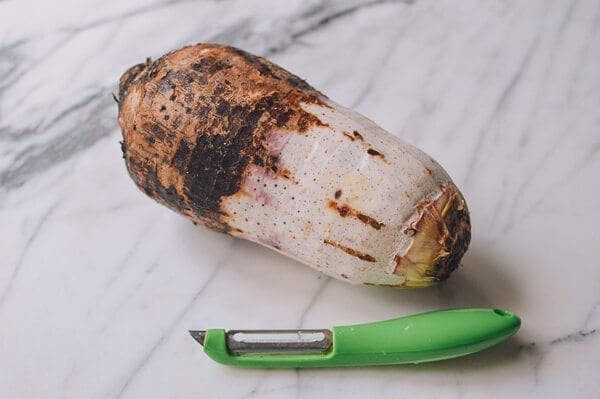

Alternatively, you can cut the large cylindrical taro into smaller pieces, then place it on its flat end and then use a sharp knife to cut away the skin. If you’re not confident in your knife skills, this method can tend to waste more taro pulp, so a vegetable peeler may be the best tool to use.
Once peeled, you can rinse it and then slice it, cut it into cubes or pieces to cook.
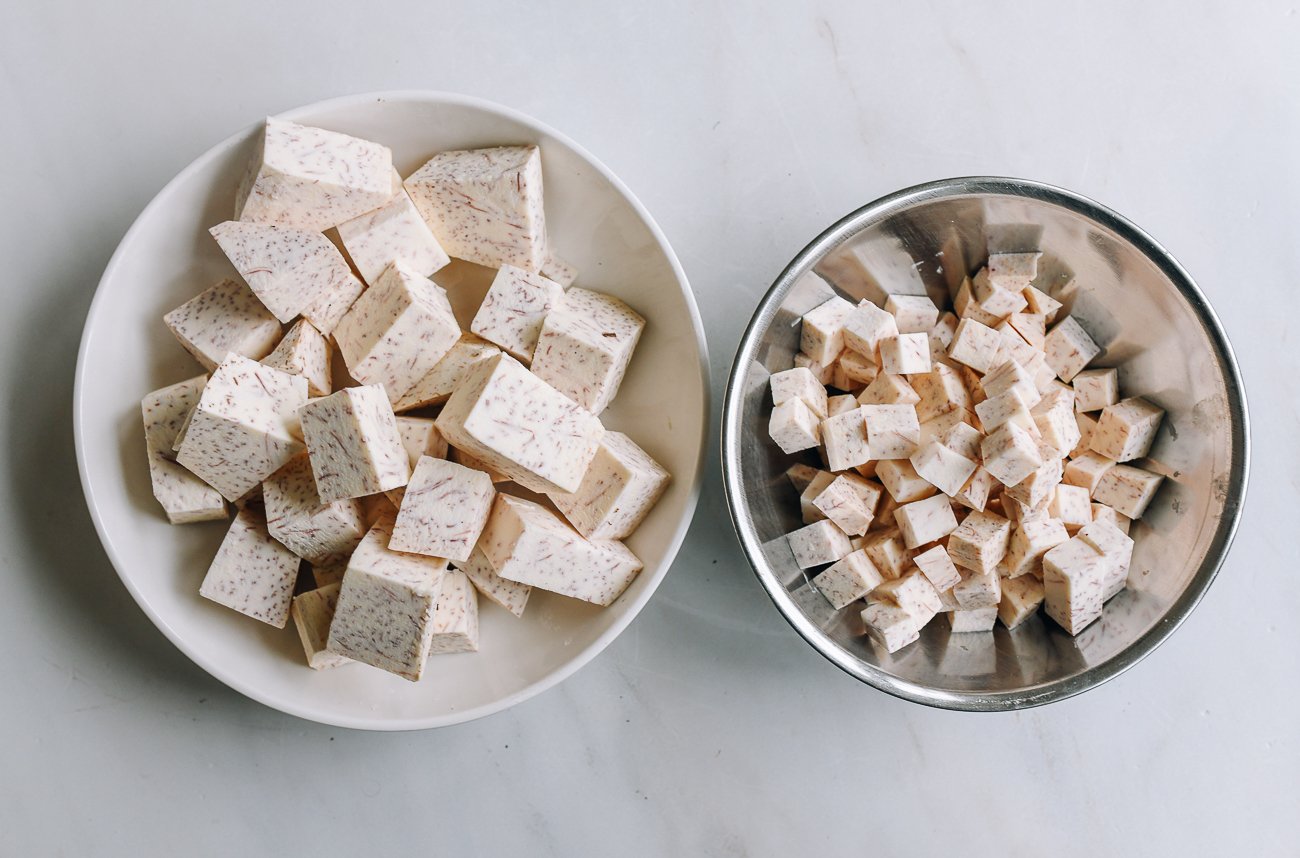
Tarò recipes
Okay, now that we’ve got the functional information out of the way, let’s talk about how to cook taro and our favorite recipes that use it.
Taro can be used in savory dishes, desserts and snacks. We love it steamed. Sometimes Judy eats it steamed, plain (instead of rice), with other dishes. We also like to use it to prepare crunchy slices of taro cake, or in sweet soups.
Here are some of our favorite taro recipes:
Taro Cake
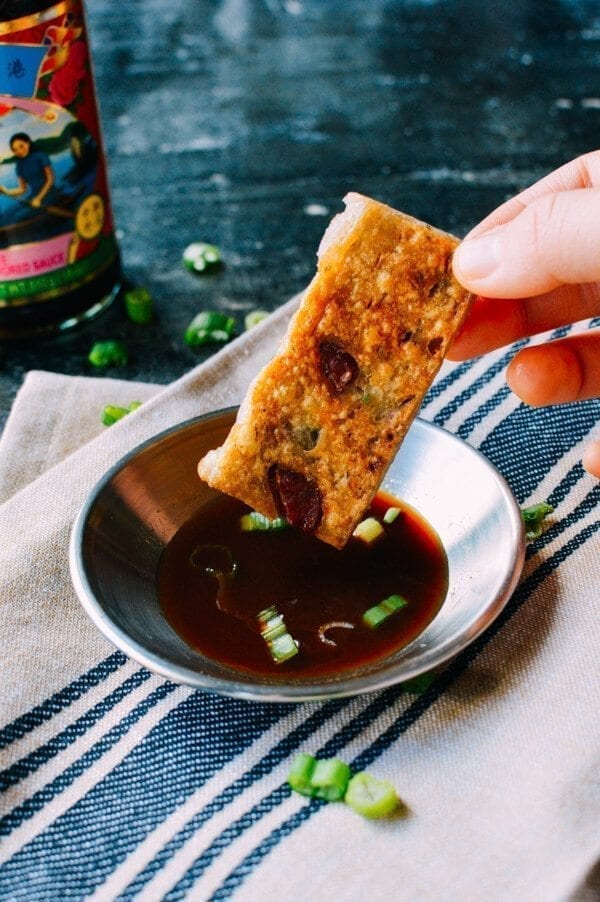

This recipe probably accounts for the majority of our taro consumption over the years. We do this more often during Chinese New Year. Mixed with rice flour, glutinous rice flour, Chinese sausage, dried shrimp, scallions and seasonings, the batter is then steamed and pan-fried until crispy. It’s so delicious and makes a great breakfast or snack, on its own or (like bak go/radish cake) dipped in oyster sauce.
Braised pork ribs with taro
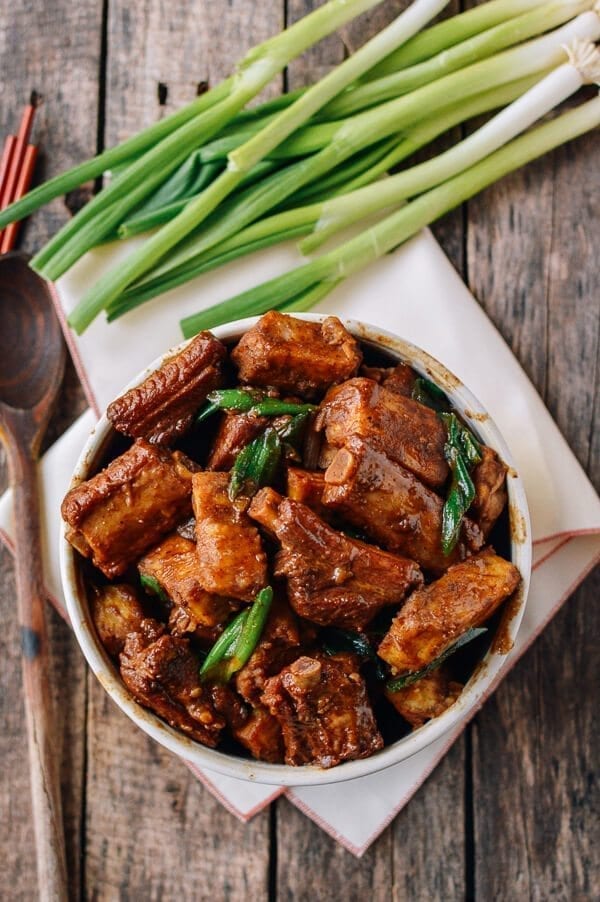
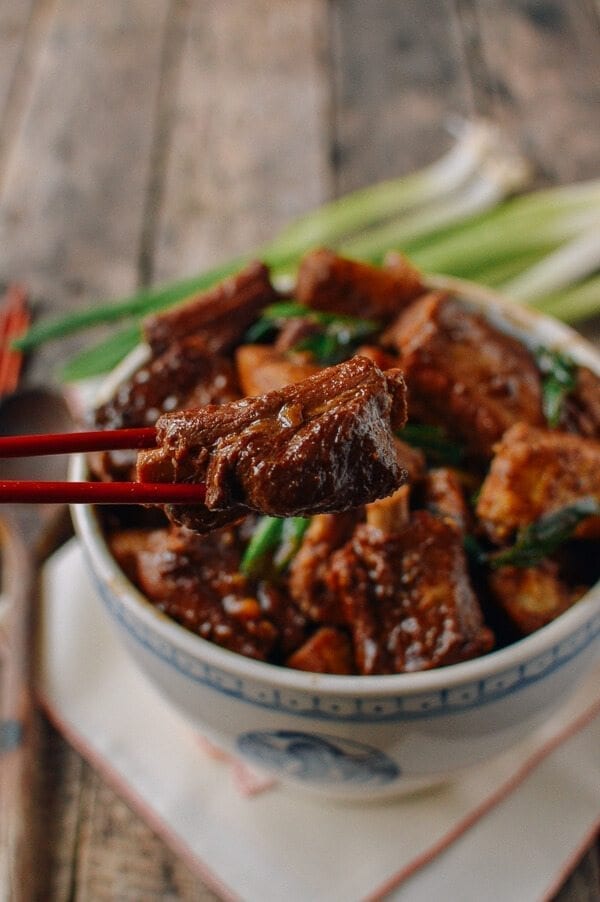
Taro is wonderful in braised meat dishes. You might even find yourself reaching for the taro rather than the meat! You fry it to get a nice crust before adding it to the pot roast. This ensures that it doesn’t break down in the sauce. The taro absorbs the flavor of the sauce and also provides a nice textural contrast to the meat on the plate.
Braised duck with taro
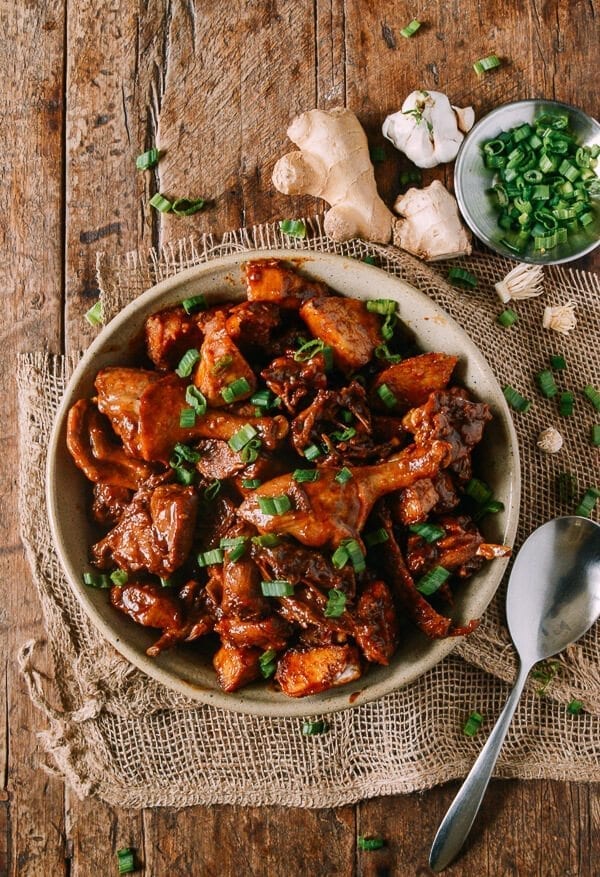
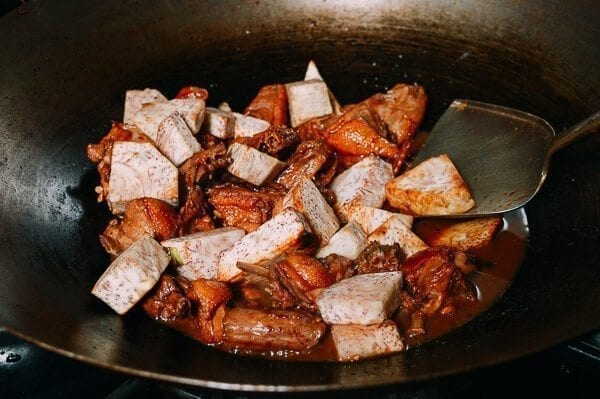
If you want to try a more traditional and spectacular dish for a special occasion, this is taro braised duck! You won’t find this in a restaurant. Our recipe comes from Bill’s father, a restaurant chef, who only prepared it at home.
Steamed garlic ribs with taro
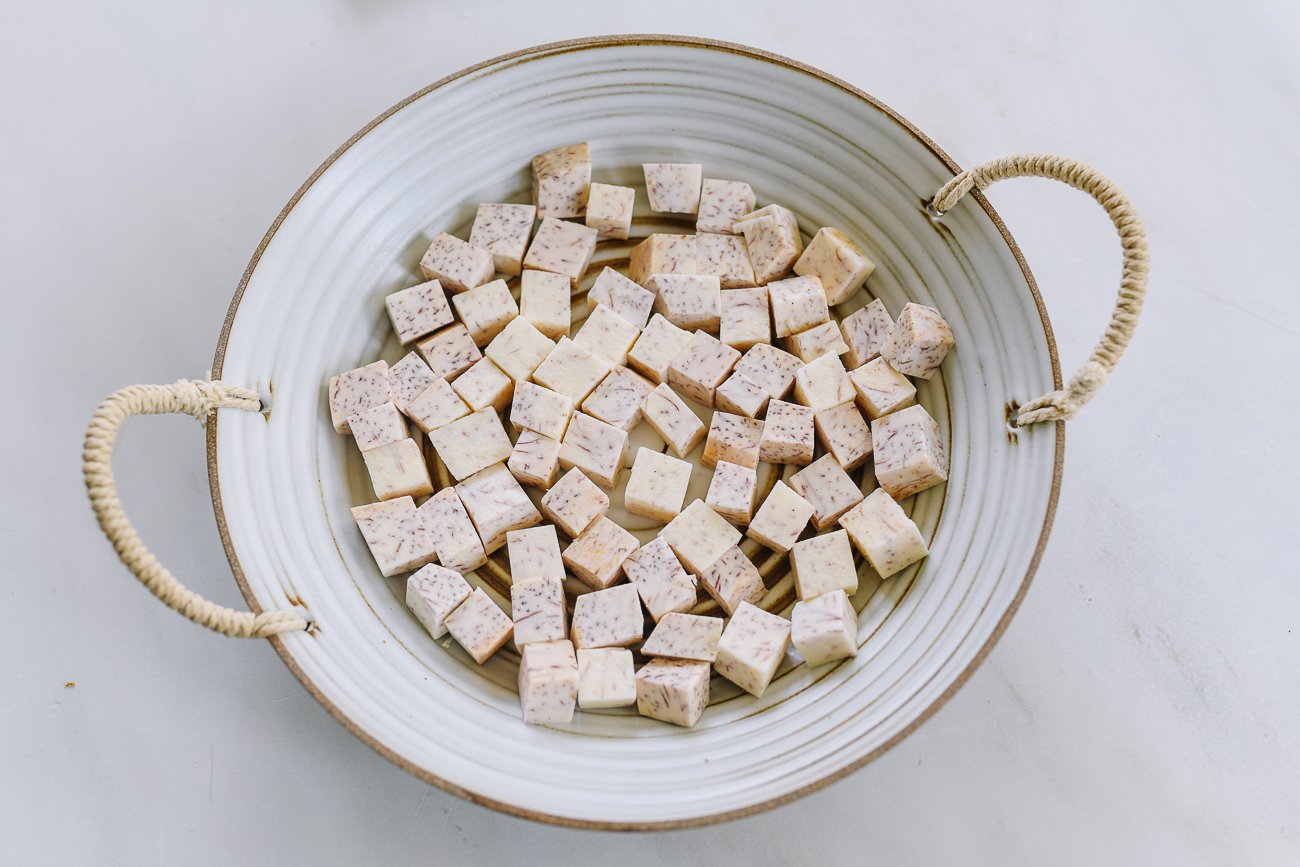
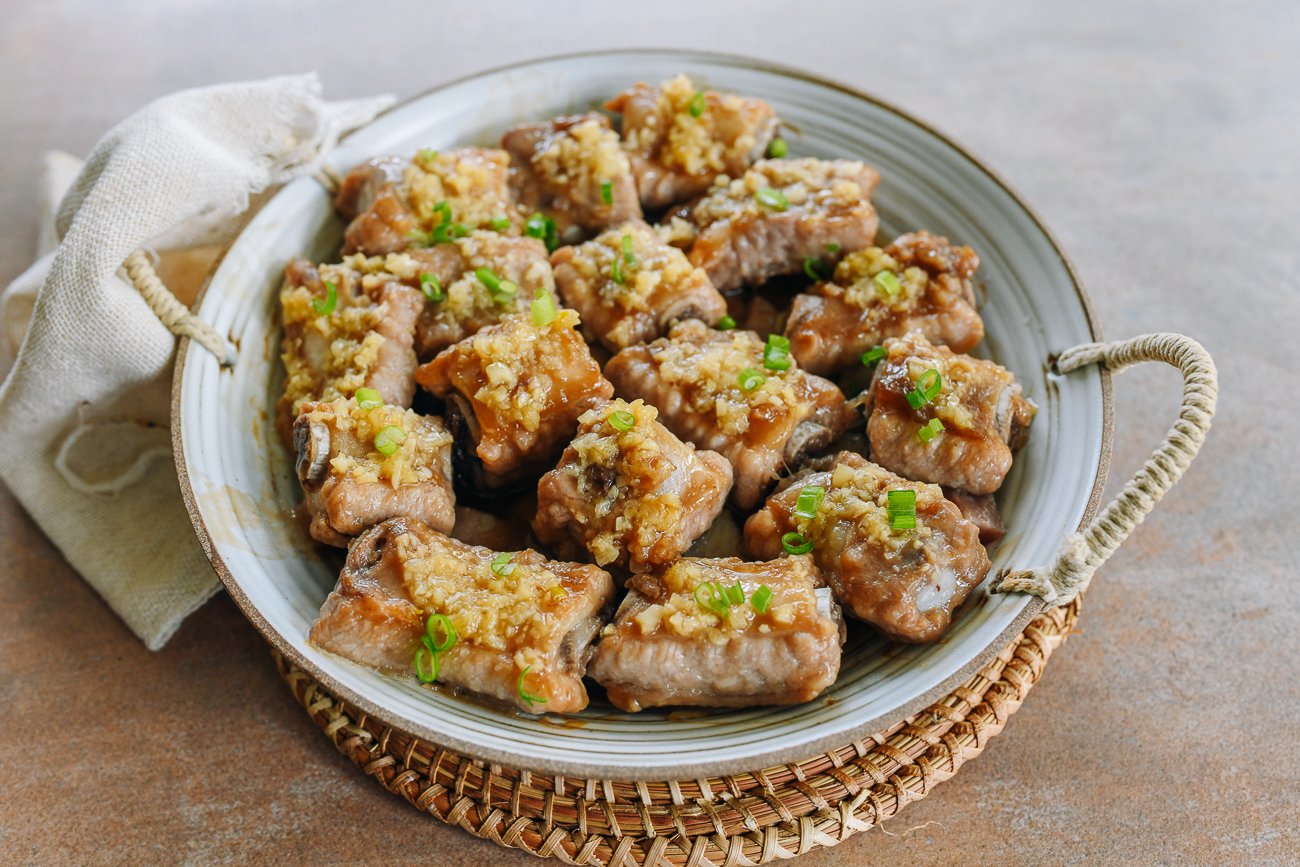
Taro could just be the protagonist of this dish. Garlic pork ribs are steamed on a bed of taro cubes, which soak up all those delicious juices and flavors. This recipe is easy enough for a week! Simply marinate the ribs the night before and steam them when you’re ready to eat!
Steamed Pork Belly with Taro (Wu Tau Kau Yuk)
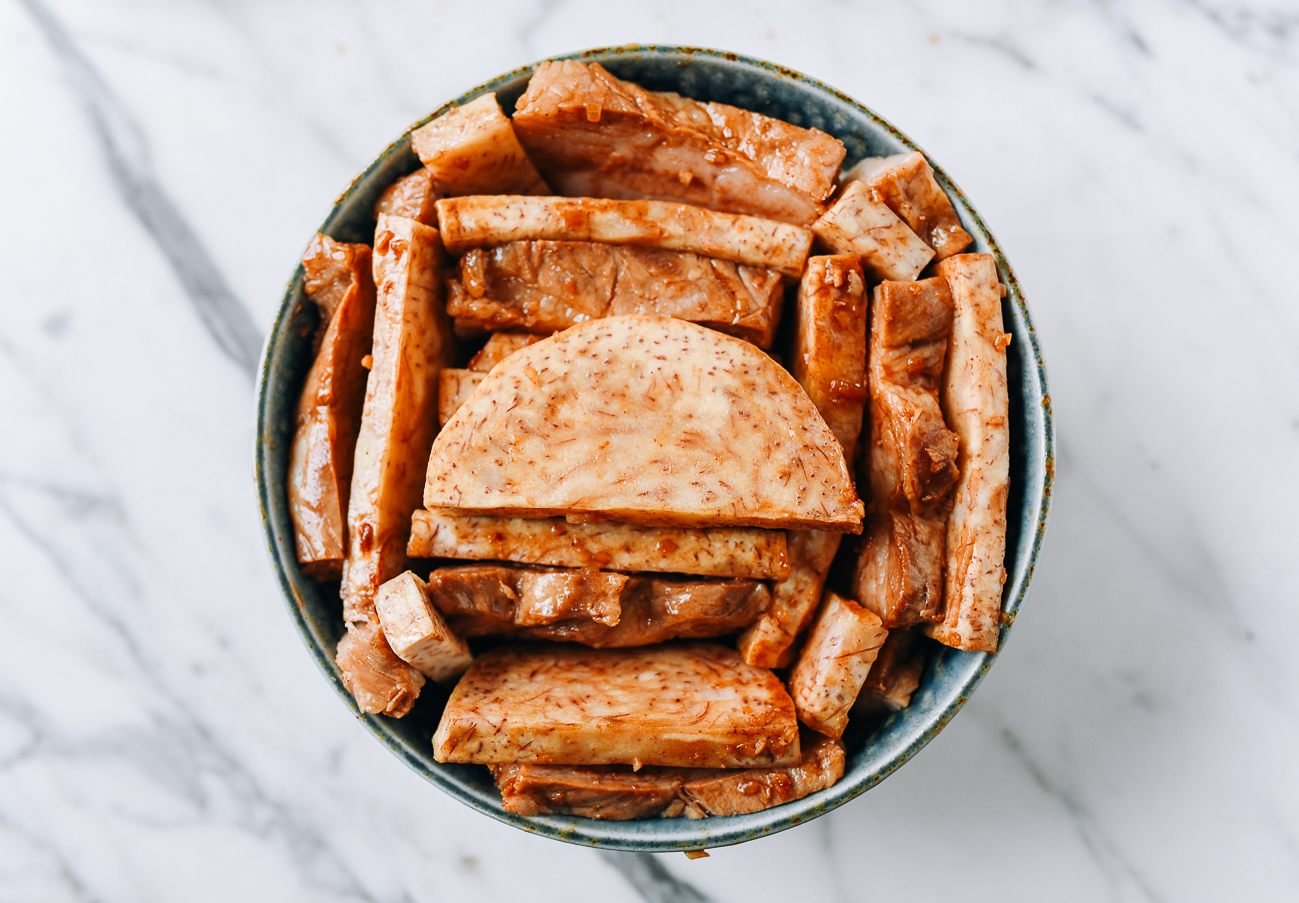
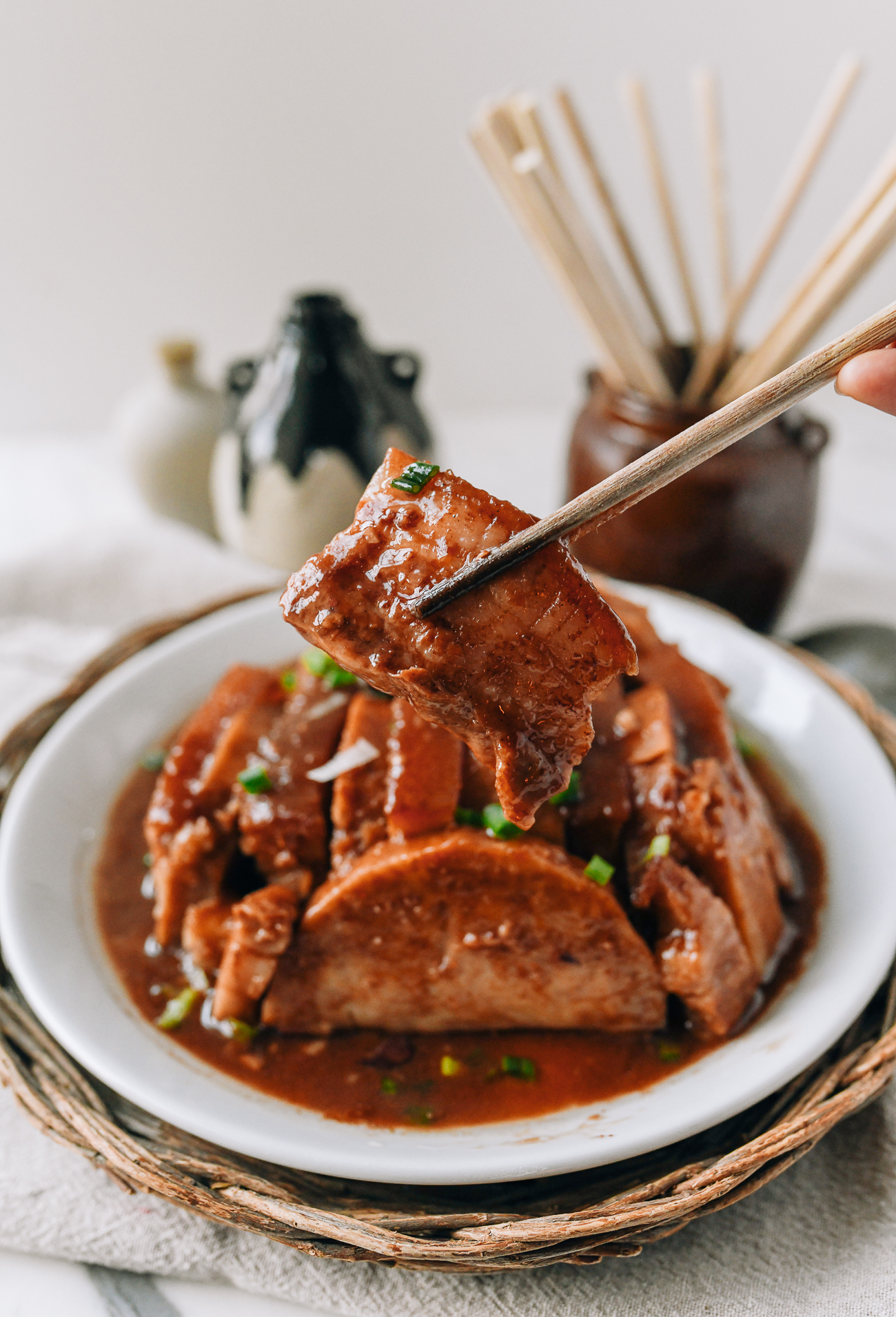
We’re launching this recipe in celebration of Chinese New Year because it requires a little care and is a show-stopper. Slices of taro are layered with pork belly in a delicious sauce. They are steamed together and the sauce is reduced and poured over. This is always requested during Chinese holidays at our house for a reason! Do it for your loved ones and get ready to reap compliments! If you have someone in your life who makes this happen for you, consider yourself lucky!
Chinese seafood bird’s nest
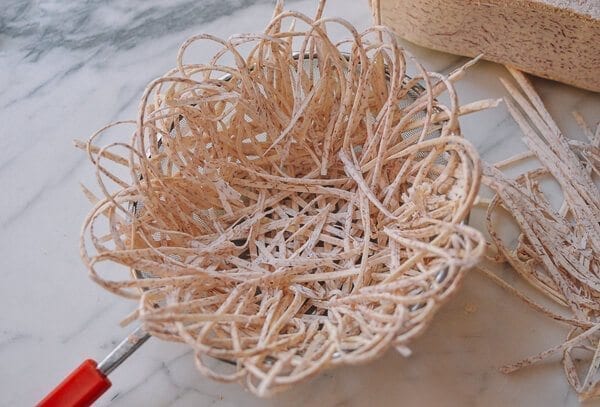
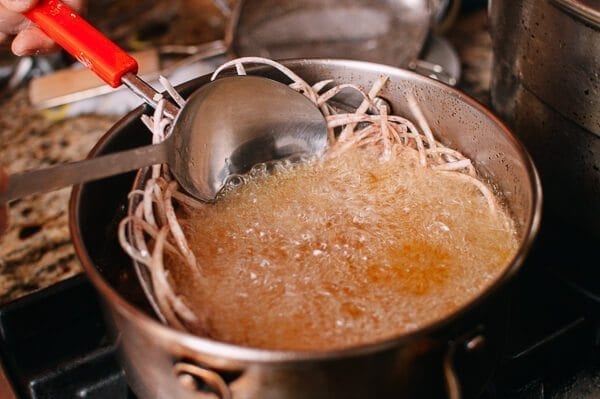
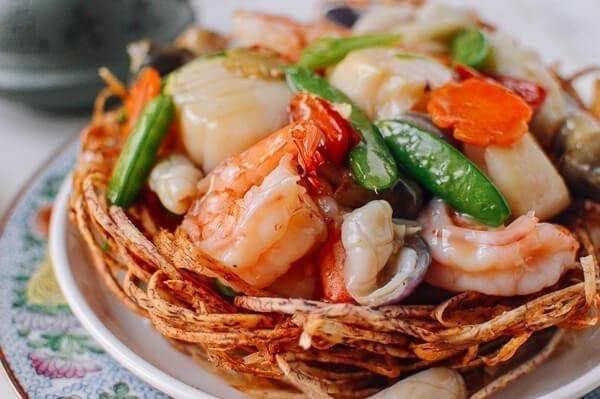
This recipe is an example of fried taro. It can be cut into thin slices and fried into chips, or julienned and then fried in a basket, as in this delicious restaurant-style dish. A fried “nest” serves as the base for a clean, fresh fish fry with vegetables. Want to test your cooking skills? Test yourself with this delicate Chinese banquet dish.
Tarò rice

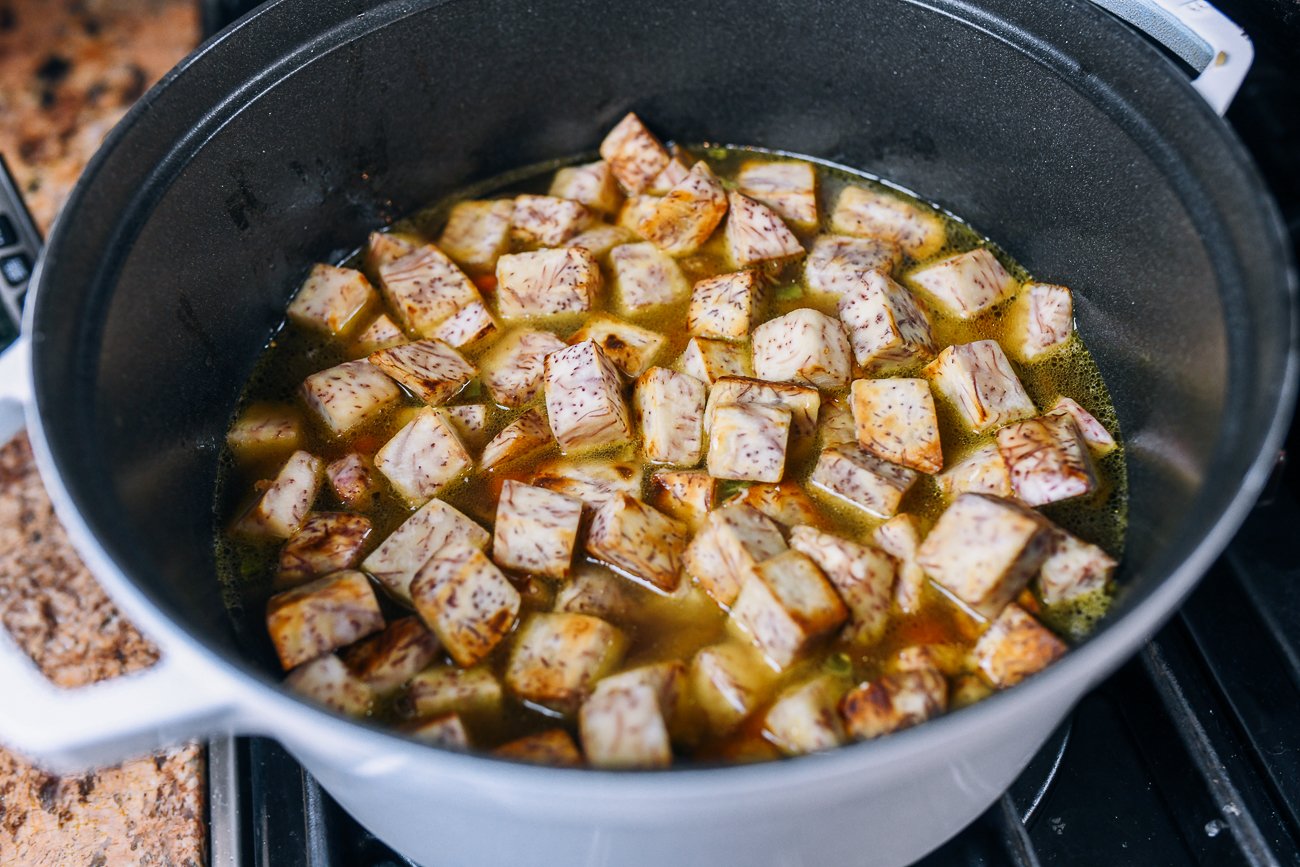
A comforting, rib-sticking dish of buttery taro cubes, seasoned rice, Chinese sausage, aromatic dried shrimp and scallions, this hearty recipe feeds a crowd!
Sweet taro sago soup

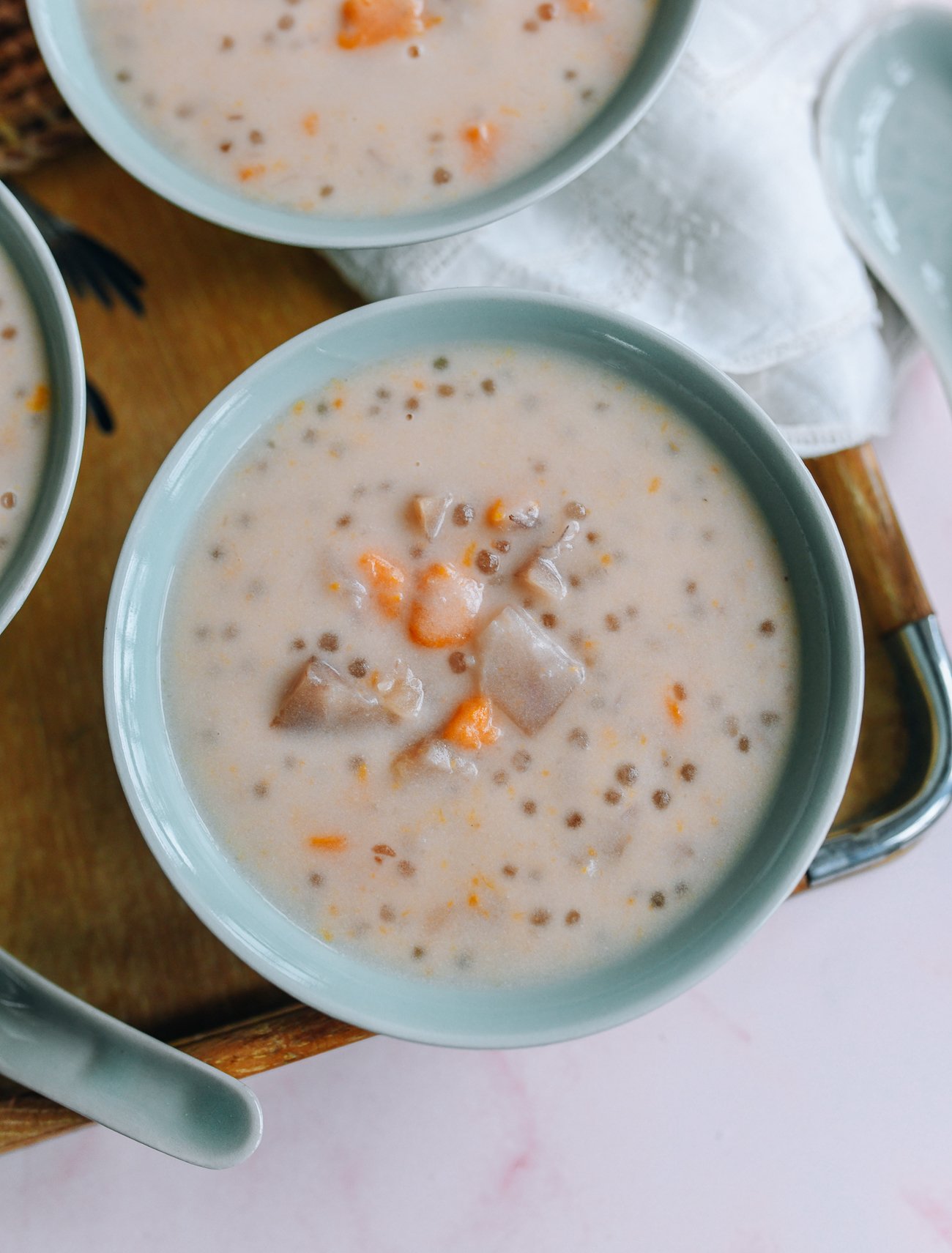
Our favorite taro dessert is this creamy, slightly sweet soup. Sweetened with condensed milk and enhanced with a little coconut milk, this dessert has a rich, delicious flavor without being heavy or overly sweet. For us, a hint of vanilla ties all the flavors together!
This ingredient across cultures
Wild taro plants are native to the tropics of Southeast Asia, where humans learned to cultivate the plant long ago. Migration, trade, and colonization brought taro to Africa, the Americas, and the Mediterranean region.
Around the world, this vegetable has many names, including chēmbŭ, cocoyam, dasheen, eddoe, gabi, kalo, khoai môn, kochu, saru and taro, a loanword from the language of the Maori people.
Many cultures have their own connections with it:
- In Hawaii it then becomes a smooth, purple pasta that has been a staple for generations
- Chinese dim sum masters transform it into wu gok, those crispy, golden dumplings with crispy “tufts” encasing buttery taro and a tasty meat filling. We have that recipe in our cookbook!
- Philippine bubble tea shops turn it into a dreamy, creamy drink that’s impossible to resist
- Japanese cuisine celebrates it in everything from mochi to ice cream
- If you got into the Terra potato chip craze in the ’90s, you may have fried them into potato chips!
Next time you’re at an Asian market, grab some taro and see what all the fuss is about. If you have any other questions about this ingredient, let us know in the comments!

